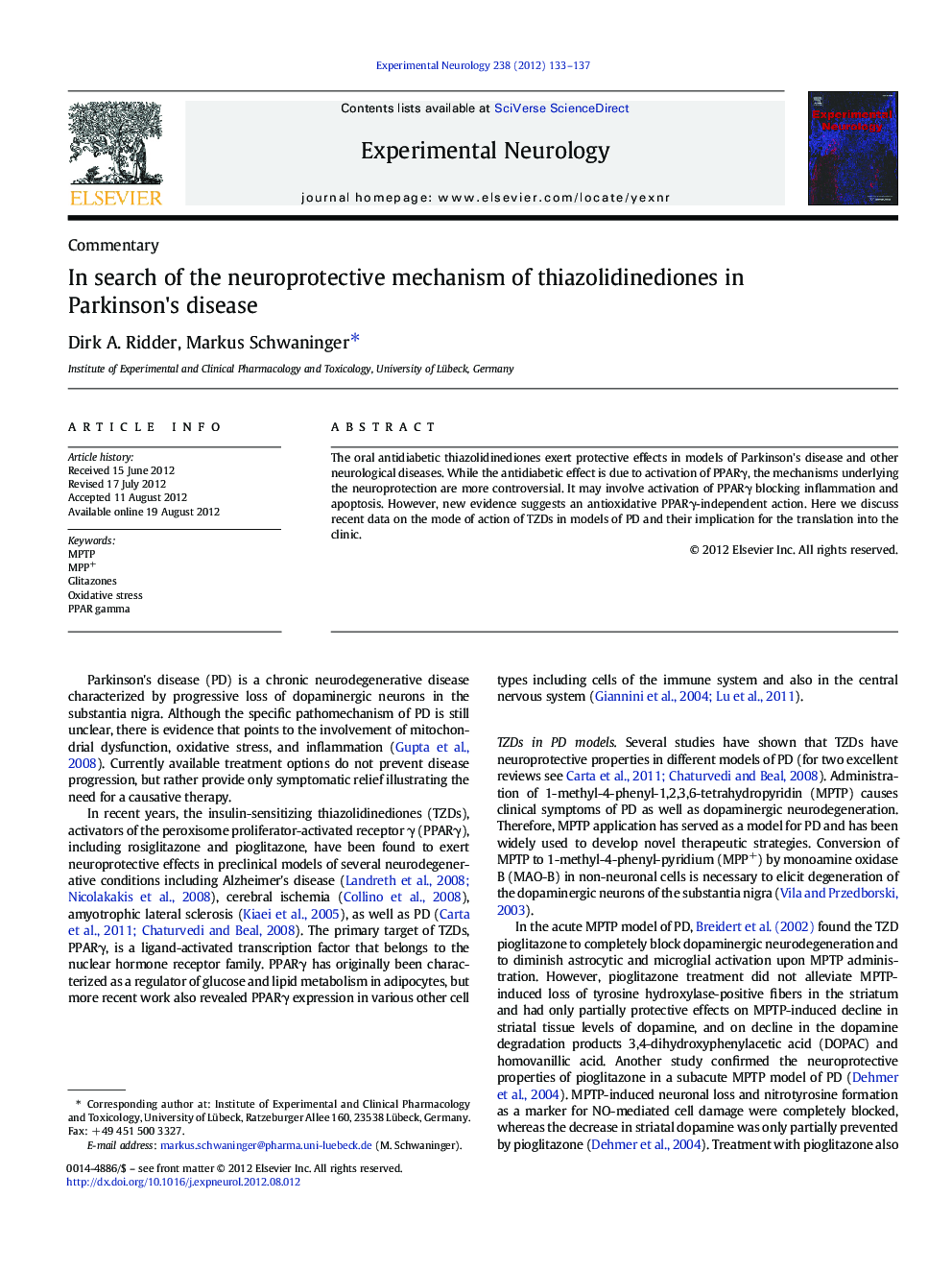| Article ID | Journal | Published Year | Pages | File Type |
|---|---|---|---|---|
| 6018740 | Experimental Neurology | 2012 | 5 Pages |
Abstract
The oral antidiabetic thiazolidinediones exert protective effects in models of Parkinson's disease and other neurological diseases. While the antidiabetic effect is due to activation of PPARγ, the mechanisms underlying the neuroprotection are more controversial. It may involve activation of PPARγ blocking inflammation and apoptosis. However, new evidence suggests an antioxidative PPARγ-independent action. Here we discuss recent data on the mode of action of TZDs in models of PD and their implication for the translation into the clinic.
Related Topics
Life Sciences
Neuroscience
Neurology
Authors
Dirk A. Ridder, Markus Schwaninger,
